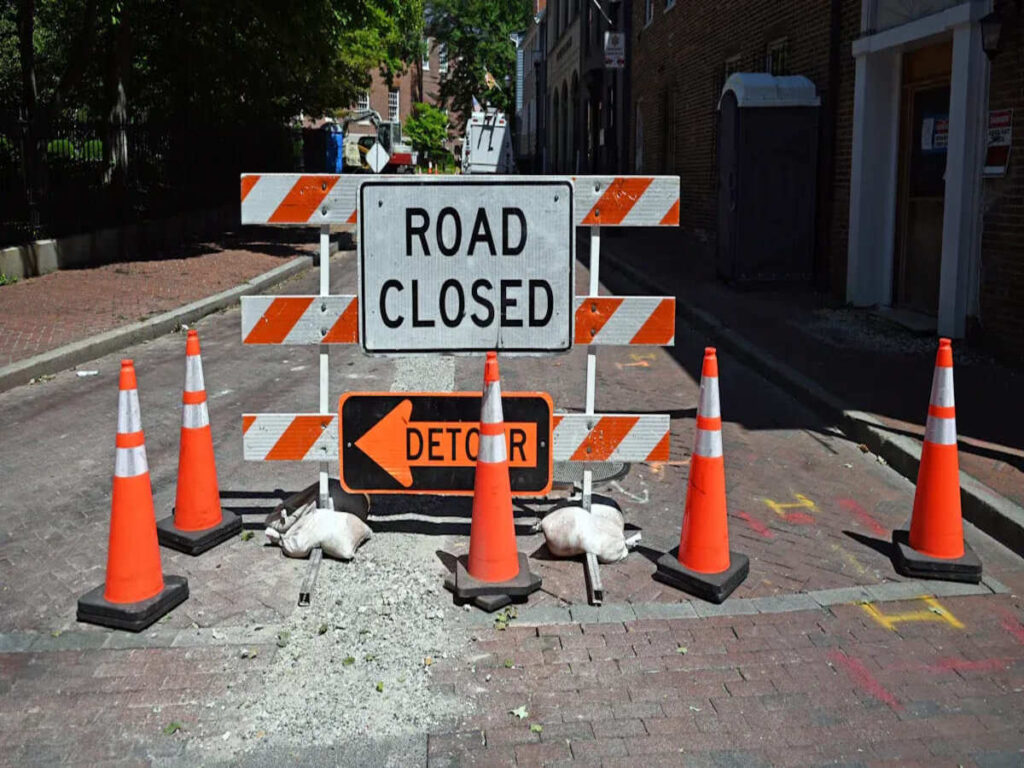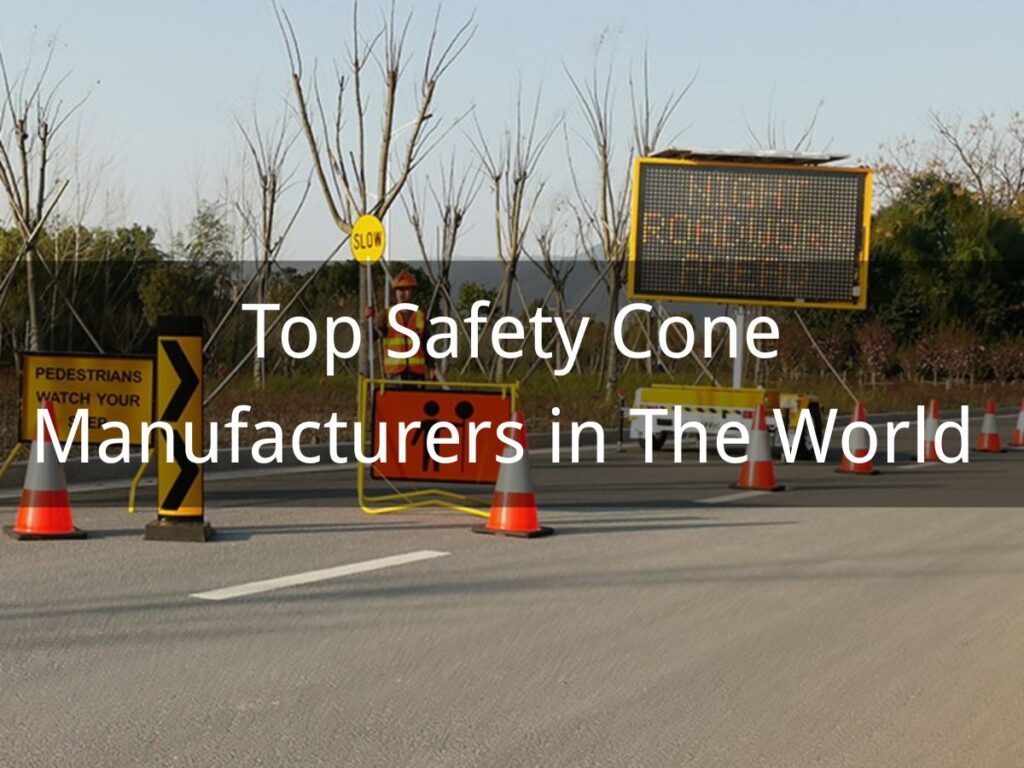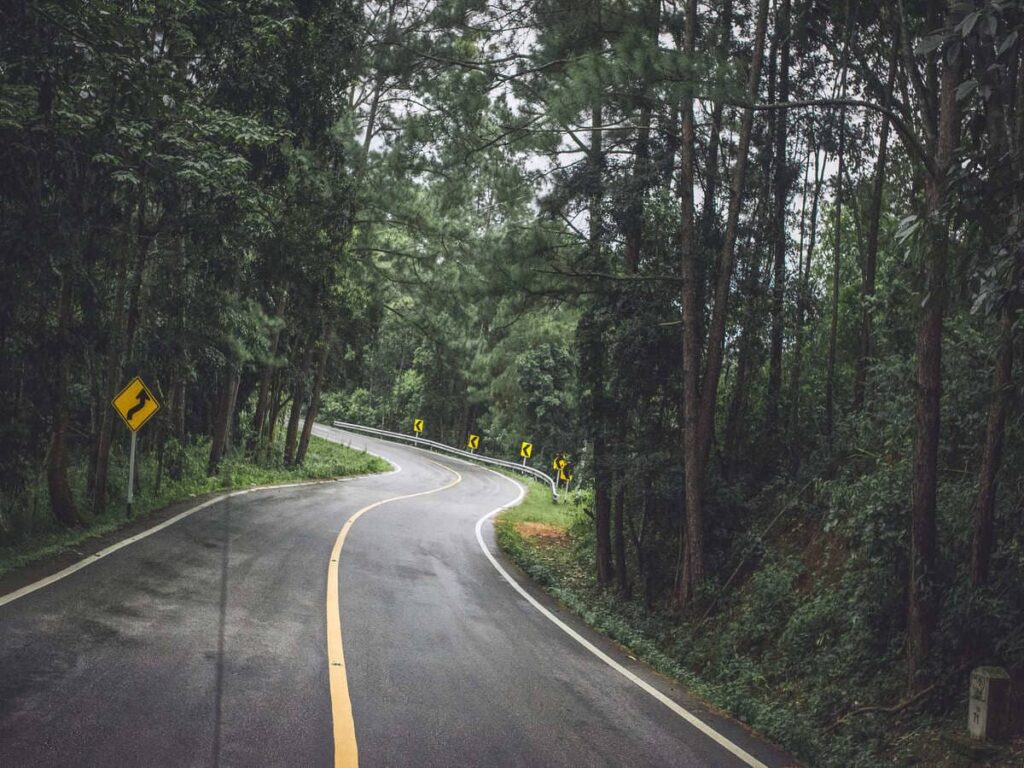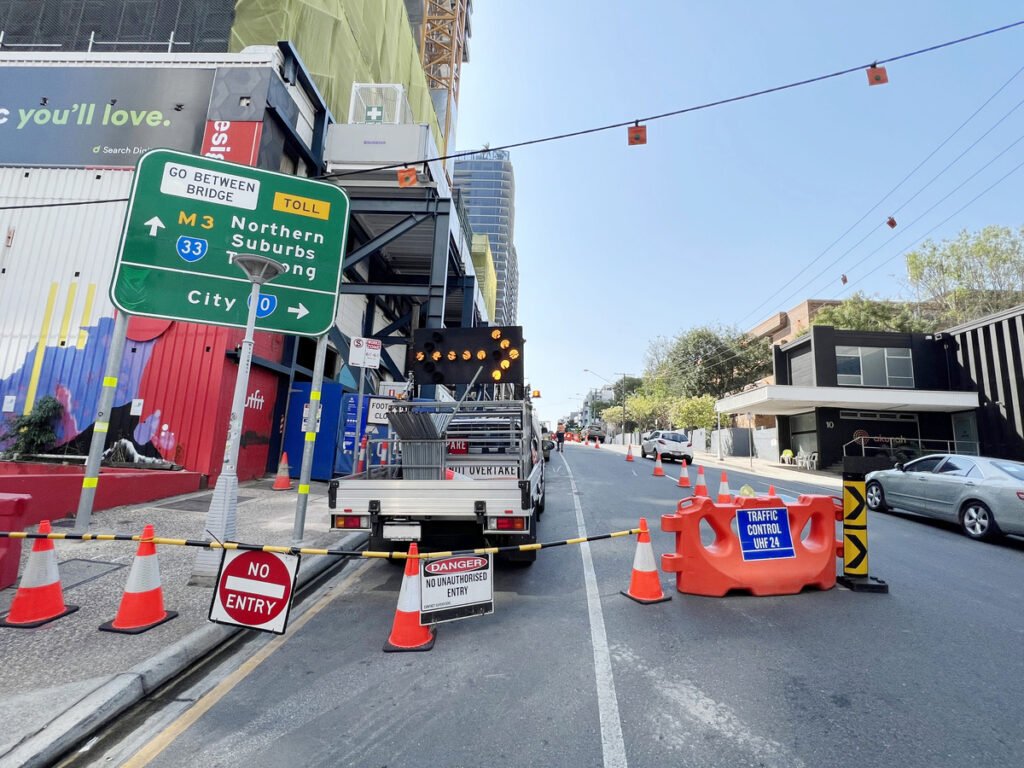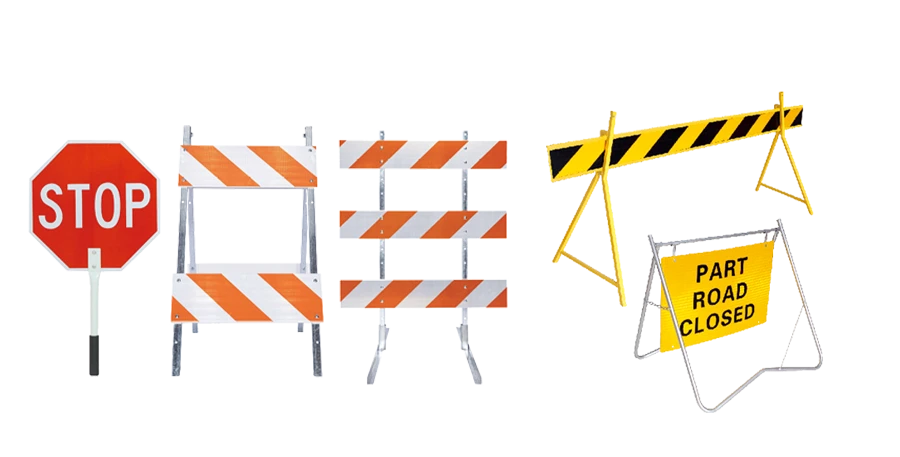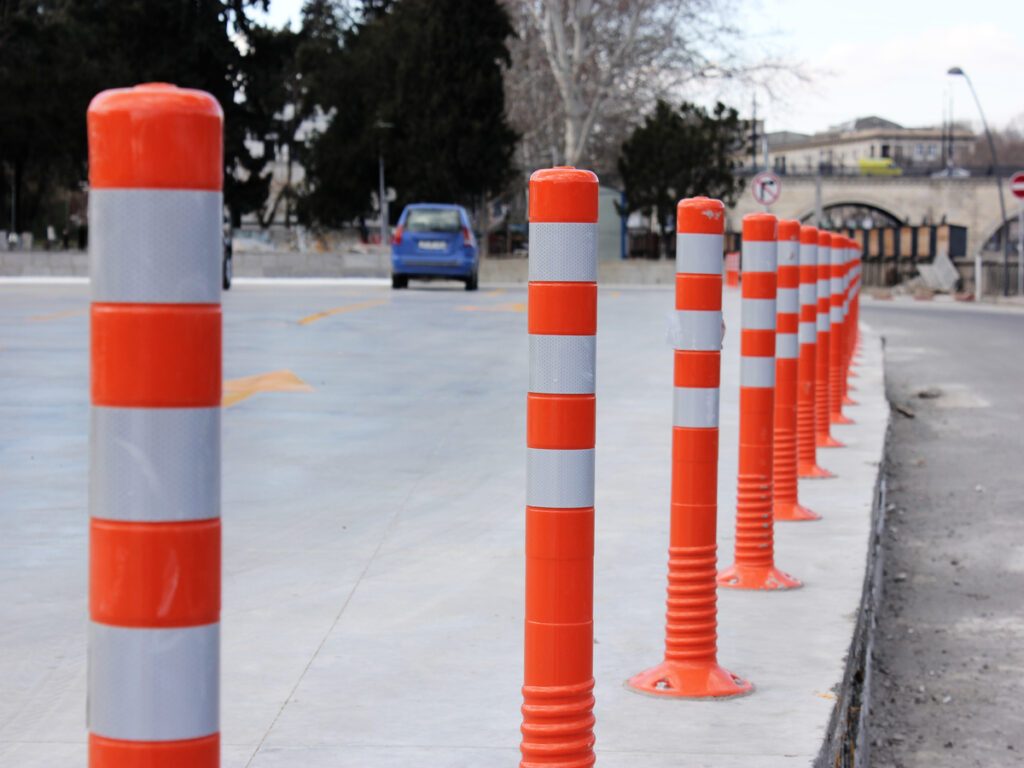
Nos Estados Unidos, people use many names for traffic delineators, which are one of the various types of delineators. Você pode encontrá -los nas rodovias, em estacionamentos, or near construction sites. They are called safety devices. Using the correct name helps you know what to do. It helps you follow rules and stay safe. The name can change depending on where you live. Your job or how you use them also matters. People talk about different types of delineators for special uses.
Takeaways -chave
- It is important to know about traffic delineators for road safety. Using the right words helps you follow rules and talk clearly with others.
- There are different kinds of delineators for different jobs. Postos de trânsito, canalizadores, tubular markers, and flexible posts all help keep roads safe in their own ways.
- People use different words for delineators in different parts of the U.S. Learn the local names so you can talk clearly and follow safety rules.
- Always look at local and federal rules before you put in delineators. This makes sure your work is safe and follows the law.
- Talking clearly about traffic delineators helps keep everyone safe. Use the right words so others can understand and follow the rules.
Common Terms for Traffic Delineators
When you travel across the United States, you see many devices that help guide traffic and keep roads safe. People use different names for these tools. You need to know these terms to understand instructions and follow safety rules. Here are some of the most common names you will hear.
Postos de trânsito
You often see traffic posts along highways and in parking lots. These posts stand upright and mark lanes or boundaries. You can spot them because they are tall and easy to see. Most traffic posts use bright colors like orange or yellow. Some have reflective strips that shine at night. You find these posts in places where drivers need clear guidance. Traffic posts help you stay in your lane and avoid dangerous areas. They belong to the types of delineators that work well for both temporary and permanent setups.
Dica: If you see a row of tall, colorful posts on the road, you are looking at traffic posts. They help you know where to drive and where not to go.
Canalizadores
Channelizers play a big role in traffic control. You see them near construction zones, cruzamentos ocupados, and places with lots of cars. These devices guide vehicles and protect people walking nearby. Os canalizadores vêm em muitas formas, but they all help organize traffic and keep everyone safe.
Here is a table that shows the main features and functions of channelizers:
| Feature/Function | Descrição |
|---|---|
| Materiais e design | Made from strong materials like plastic, borracha, ou metal. Bright colors make them easy to spot. Faixas refletivas ajudam os motoristas a vê-los à noite. |
| Funcionalidade e propósito | Act as barriers to control traffic flow. Guide vehicles and protect pedestrians. Mark boundaries to improve safety. |
| Adequação para áreas de alto risco | Work well in high-speed zones. Direct traffic and improve visibility to lower crash risks. Sturdy design keeps vehicles out of restricted areas. |
You notice channelizers when you drive through areas with lots of changes or hazards. They belong to the types of delineators that offer extra protection and clear direction.
Marcadores tubulares
Tubular markers look like thin tubes standing upright on the road. You see them in places where space is tight or where you need flexible guidance. These markers bend if a car hits them, so they do not cause damage. Tubular markers use bright colors and sometimes have stripes that reflect light. You find them in parking lots, pistas de bicicleta, e zonas de trabalho. Tubular markers help you see where to go, Mesmo em áreas lotadas. They are one of the most flexible delineators you will encounter.
- Tubular markers work well for temporary changes.
- You can move them easily if you need to change the traffic pattern.
Postagens flexíveis
Flexible posts give you a safe way to mark lanes and boundaries. Esses postes dobram quando atingidos, so they do not break or damage vehicles. You see flexible posts in places with lots of movement, like busy streets or event areas. They use strong materials that last a long time. Flexible posts help you stay safe by showing clear paths and keeping cars in the right lanes. You find these posts in many types of delineators, especially where you need both safety and flexibility.
Observação: Flexible posts are great for places where cars might run into them. They bounce back and keep working, so you do not have to replace them often.
You now know the most common terms for delineators in the United States. Each name tells you something about how the device works and where you might find it.
Tipos de delineadores
You see many kinds of delineators on roads. Each kind looks different and does a special job. Knowing these differences helps you pick the right one for your needs.
Post Delineators
Post delineators stand up tall next to roads. People use them to show lanes and help drivers. They also keep people walking safe. These posts are made from strong plastic. They last a long time and work in any weather. You can spot them by their bright colors and shiny strips. These features make them easy to see day or night.
Here is a table that compares post delineators to other devices:
| Recurso | Postagens delineadoras | Other Delineators (Por exemplo, cones, guardrails) |
|---|---|---|
| Material | High-density or low-density polyethylene | Various materials, often less durable |
| Visibilidade | Tall poles, alta visibilidade | Varia, often lower visibility |
| Durabilidade | Designed for long-term roadside service | May require more frequent replacement |
| Resistência ao tempo | All-weather visibility | Performance may vary in adverse conditions |
| Specific Applications | Separação da pista, segurança de pedestres | General traffic control, less specific use |
Dica: Post delineators are good for marking lanes and keeping people safe. They work better than cones in many cases.
Mount and Barrier Wall Delineators
Mount and barrier wall delineators attach to rails and barriers. You use them to show the edge of the road. These devices help drivers see changes, mesmo à noite ou em mau tempo.
When you put up mount and barrier wall delineators, you need to follow steps. State transportation departments give rules for this:
- Make sure bolts are tight and rods are trimmed.
- Measure how high the rail or barrier is above the ground.
- Check that bridge railing connections are correct.
- Look at anchor parts and cable setup.
- Put posts in solid ground and change lengths if needed.
- Dig holes for anchors to the right size.
- Tighten cables so they do not hang loose.
- Throw away extra material to keep drains clear.
- Place concrete dikes under rails as shown in plans.
- Use bolts that are long enough, with only a little sticking out.
Observação: You must do these steps to keep barrier wall delineators safe and working well.
Flexible and Portable Delineators
Flexible and portable delineators bend if a car hits them. You use them in busy places like parking lots or events. These devices do not break easily. You can move them to change traffic flow or mark new lanes. Their bright colors and shiny surfaces help drivers see them from far away.
Flexible and portable delineators are great for short jobs. You can put them up fast and take them down when done.
Métodos de instalação (Superfície, Ground, Portátil)
You can install delineators in different ways. Surface-mounted ones stick to pavement or concrete. Ground-mounted types go into dirt or gravel. Portable delineators stand on heavy bases, so you can move them.
The Federal Highway Administration lists three main kinds of delineators. You see these types used in many ways:
| Tipo de delineador | Descrição |
|---|---|
| Single Delineator | One shiny part for one direction. |
| Double Delineator | Two shiny parts together for one direction. |
| Vertically Elongated | One tall shiny part, like two single delineators. |
Chamar: Pick the installation method that fits your project and local rules. Each way helps keep roads safe and traffic moving.
Now you know the main kinds of delineators and how to use them. Each kind has special features for different places. You can choose the best one for your road, parking lot, or work site.
Regional and Industry Names
East Coast vs. West Coast
People use different words for traffic delineators in the U.S. On the East Coast, you hear “flex posts” ou “Postagens delineadoras” bastante. These names talk about the shape and how the device bends. On the West Coast, in places like Los Angeles or Seattle, people say “channelizer” ou “tubular marker” mais. These words show how the device helps guide cars.
Dica: If you go from New York to California, you might hear new names for the same thing. Always look at local signs or ask workers if you do not know.
California’s Definition and Color Use
California has its own rules for traffic delineators. The state uses special colors and shapes to help drivers. Por exemplo, orange or white posts show work zones. Yellow posts mark left edges or medians. California sometimes uses “Bollard” for strong posts, but not all are flexible.
Here is a quick table to help you remember California’s color codes:
| Cor | Uso comum |
|---|---|
| Laranja | Zonas de construção |
| Branco | Separação da pista |
| Amarelo | Medians or left edges |
You should watch for these colors when you drive in California. The color helps you know what is ahead on the road.
Construction vs. Municipal Terms
You also hear different names based on who uses the delineator. Na construção, workers say “tambores canalizadores” ou “work zone posts.” These names talk about short-term traffic control. City workers or staff may use “lane separator” ou “flexible delineator” for things that stay longer.
- Construction crews use words for quick changes and safety.
- City planners use names for long-term traffic patterns.
Observação: Knowing these words helps you talk to the right people and follow the right rules for your job.
Similar Terms and Product Differences
Delineatores vs.. Bollards
Road delineators and bollards look similar, but they do different things. Delineators help drivers stay in their lanes. They make roads safer by showing where to go. Bollards stop cars from entering certain places. You see bollards near driveways or in front of buildings. Both must be easy to see and safe to use. Their jobs are not the same.
- Delineators show drivers where to go.
- Bollards keep cars out of some areas.
- Each one has its own safety rules.
Dica: Use delineators to guide cars. Pick bollards to block cars.
Canalizadores vs.. Cones
Channelizers and cones are common in busy places. Both help control traffic, but they work differently. Traffic cones mark lanes and show where work is happening. You can move cones and add weights to keep them steady. Channelizers are bigger and have shiny strips. Their rubber base keeps them standing in strong wind.
- Traffic cones split lanes and show work spots.
- Channelizers guide cars through tricky areas.
- Channelizers are easy to see and follow strict rules.
| Recurso | Cones de trânsito | Canalizadores |
|---|---|---|
| Visibilidade | Shiny bands | Cor brilhante, shiny strips |
| Estabilidade | Weighted to stay put | Rubber base for strong wind |
| Uso | Split lanes, mark work | Guide cars, zonas de trabalho |
| Conformidade | Basic safety rules | Federal Highway rules |
Observação: Channelizers are best for places needing strong guidance.
Permanent vs. Temporary Devices
You need to know if a device stays or moves. Permanent devices stay in one spot for a long time. You see them marking lanes or protecting sidewalks. Temporary devices move easily and help with short-term changes. Delineators can be permanent or temporary. Pick the right one for your project and how long you need it.
- Permanent devices last for years and mark set paths.
- Temporary devices help with quick changes and move around.
- Always check local rules before putting up any device.
Chamar: Use permanent devices for long-term safety. Pick temporary ones for short jobs or changing traffic.
Standards and Guidelines
MUTCD and Federal Standards
You should know about the Manual sobre Dispositivos Uniformes de Controle de Tráfego (MUTCD). This book gives rules for traffic safety devices in the country. MUTCD explains how to use flexible delineator posts and reflective raised pavement markers. These rules help keep roads safe and easy to understand. If you want to use new traffic technology, you must follow MUTCD rules. Trying new devices takes time because you need to test them. Safety and clear use are very important. When you use flexible delineator posts, check if they meet MUTCD rules.
Dica: Always check MUTCD before picking or putting in flexible delineator posts. This helps you avoid mistakes and keeps your project safe.
Regulamentos estaduais e locais
States and cities have their own rules for traffic devices. Some places let you use special colors or shapes for flexible delineator posts. Local groups sometimes allow new designs, but you cannot change things that make roads less safe. You need to balance new ideas with safety rules that work. If you want to use reflective raised pavement markers, check both state and federal rules. Some states want extra tests or special ways to put them in.
Here is a table to help you compare federal and state rules:
| Tipo de regra | What You Should Check | Example Device |
|---|---|---|
| Federal | Padrões mutcd, safety requirements | flexible delineator posts |
| Estado | Local color, forma, e colocação | reflective raised pavement markers |
Observação: Always check local rules before buying or putting in flexible delineator posts. This keeps your project legal and safe.
Manufacturer Naming
Manufacturers use their own names for traffic devices. You might see flexible delineator posts called lane markers, canalizadores, or safety posts. These names can be different from company to company. When you buy flexible delineator posts, read the product details carefully. Make sure the posts follow MUTCD and local rules. If you see a new name, ask the seller if the device fits your needs. You want to avoid confusion and pick the right product for your job.
- Look for clear product descriptions.
- Ask for proof that the posts follow MUTCD and state rules.
- Compare flexible delineator posts from different brands.
Chamar: Always match the manufacturer’s name with the official rules. This helps you choose the best flexible delineator posts for your job.
You need to know the right terms for traffic delineators. This helps you stay safe and follow rules. Pick the best product for your area and job. Always check local guidelines before you buy or install anything.
- Ask suppliers if you have questions.
- Use the correct name for clear communication.
Good communication keeps roads safe for everyone. When you use the right words, you help others understand and follow safety rules.
Perguntas frequentes
What is the main purpose of a traffic delineator?
You use a traffic delineator to guide drivers and keep roads safe. These devices show you where to drive and help prevent accidents. You see them in work zones, Estacionamentos, e ruas movimentadas.
How do you know which term to use for a delineator?
You should check local rules or ask workers in your area. Different regions and jobs use different names. Using the right term helps you follow safety rules and talk clearly with others.
Can you use delineators for both temporary and permanent setups?
Sim, você pode. Some delineators move easily for short-term jobs. Others stay in place for years. You pick the type based on how long you need it and where you use it.
Do all delineators meet the same safety standards?
Não, not all delineators follow the same rules. You must check if the product meets MUTCD and local standards. Isso mantém seu projeto seguro e legal.
What should you do if you are unsure about which delineator to choose?
Dica: Ask your local supplier or check city guidelines. You can also read the product label for compliance information. Picking the right delineator keeps everyone safe.


